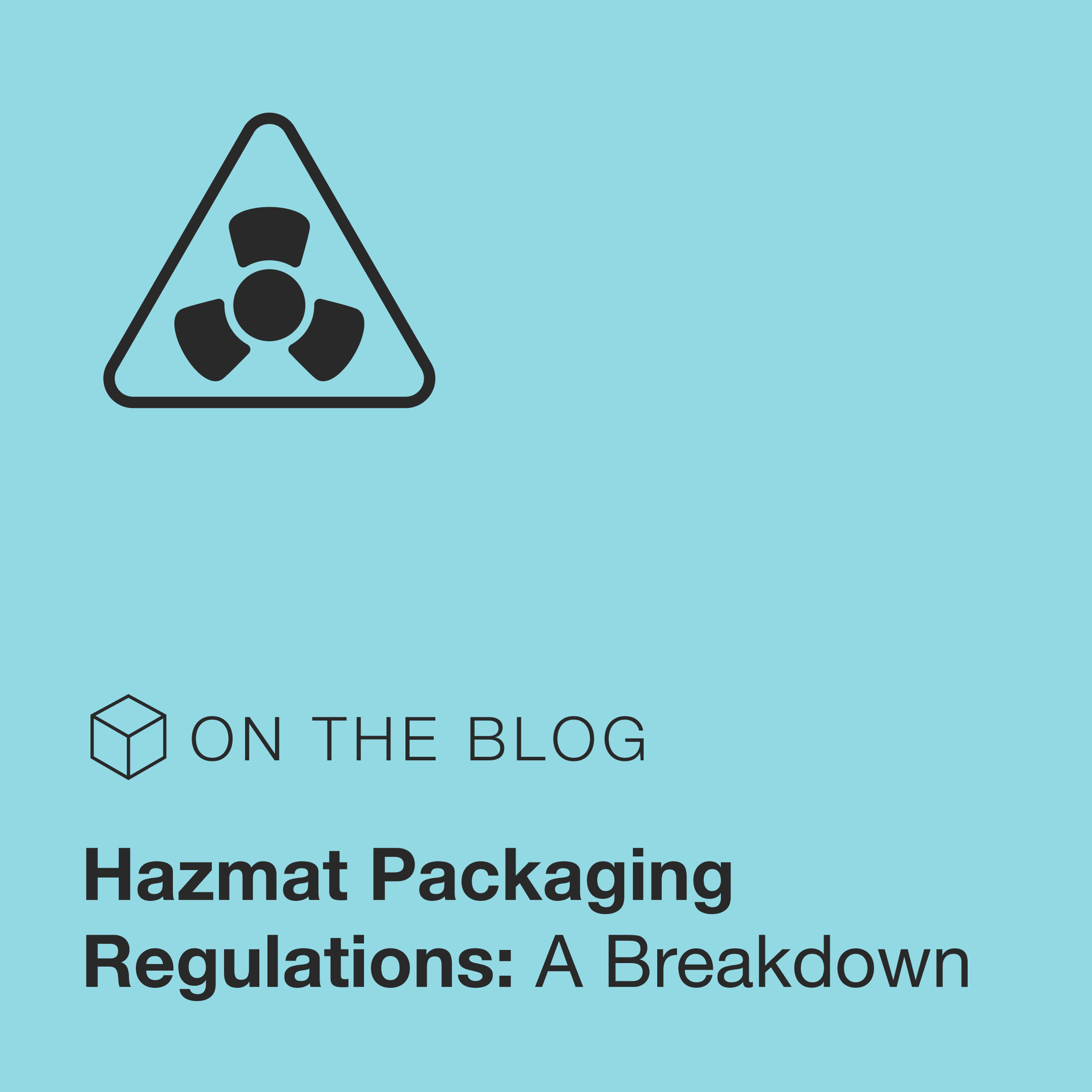Navigating the world of hazardous materials can feel like a labyrinth of regulations and requirements. Whether you’re involved in hazmat shipping, industrial packaging,or exploring custom packaging solutions, understanding hazmat packaging regulations is crucial for maintaining safety and compliance. Let’s break down the basics to make sure your supply chain is efficient and compliant.
The Scoop on Hazmat Packaging
Hazmat packaging is designed to safely contain and transport hazardous materials, so they don’t pose a risk to people, property, or the environment. Hazardous materials can range from chemicals and biological agents to radioactive materials and flammable substances. Each type of hazard requires specific packaging methods and materials to manage the risks associated with it. Hazmat packaging is especially crucial for several industries, including:
- Energy
- Oil and gas
- Mining
- Aerospace
- Automotive manufacturing
Why Hazmat Rules Are a Big Deal
Hazmat packaging regulations exist to prevent accidents, leaks and spills that could result from improper handling of dangerous goods. They ensure that hazardous materials are transported in a manner that minimizes risks to health and safety. Adhering to these regulations helps your business avoid fines and legal troubles, ensuring smooth supply chain operations.
Hazmat Regulations Demystified
- Department of Transportation (DOT) Regulations: In the U.S., the DOT regulates hazmat shipping under the Hazardous Materials Transportation Act (HMTA). This includes guidelines on labeling, packaging and documentation. For international shipping, the International Maritime Dangerous Goods (IMDG) Code and the International Air Transport Association (IATA) regulations apply.
- United Nations Recommendations: The UN has established a global system for the classification and labeling of chemicals. This system includes the UN’s recommendations for packaging hazardous materials, which are widely adopted by countries around the world.
- Occupational Safety and Health Administration (OSHA) Regulations: OSHA’s standards pertaining to workplace safety, including the handling and storage of hazardous materials. They provide guidelines on how to manage and package hazardous substances within industrial settings.
Hazmat Packaging 101: The Must-Haves
When it comes to hazmat packaging, keep these considerations top of mind:
- Packaging Materials: The choice of materials is crucial. Packaging must be durable and resistant to the chemical properties of the hazardous material inside. Common packaging materials include high-density polyethylene, glass, and metal, each chosen based on the specific properties of the hazardous material.
- Labeling and Marking: Proper labeling is essential for identifying the contents and associated risks. Labels must include hazard symbols, handling instructions, and emergency contact information. This helps ensure that everyone involved in the handling and transportation process is aware of the risks.
- Documentation: Accurate documentation is a must. This includes the shipping papers, safety data sheets (SDS), and any required permits. Documentation provides crucial information for emergency responders and ensures that all parties are informed about the nature of the hazardous material.
- Container Design: Containers must be designed to prevent leaks and spills. They often come with features such as tamper-evident seals, pressure relief valves, and bagging to enhance safety. Custom packaging solutions might be necessary for particularly hazardous materials to meet specific safety requirements.
Dialing In Your Supply Chain Solutions
Effective supply chain solutions involve more than just following regulations; they require a holistic approach to managing hazards throughout the entire transport process. This means ensuring that every link in the supply chain — from packaging and labeling to transportation and handling — complies with hazmat regulations.
Custom Packaging Solutions: Sometimes, off-the-shelf packaging just doesn’t cut it. Custom packaging can be designed to meet specific needs, ensuring that your hazardous materials are handled safely and efficiently. Whether it’s a unique container design or special labeling requirements (like a skull and crossbones!), custom solutions can help address unique challenges.
Industrial Packaging Considerations: For industries dealing with large quantities of hazardous materials, industrial packaging solutions provide bulk handling capabilities while adhering to regulatory requirements. This might involve specialized containers or bulk packaging systems designed to manage large volumes safely.
WIC Tackles Hazmat
You don’t make it 50 years in this business without learning a thing or two about hazmat packaging. We excel in crafting custom hazmat packaging solutions for your industry and we pride ourselves on delivering packaging that exceeds regulatory requirements, ensuring the safe and efficient handling of hazardous materials.
At Western Industries Corporation, we merge innovative design with practical functionality. From specialized containers and secure closure systems to bespoke packaging designs, we leverage advanced manufacturing technologies and a deep understanding of industry regulations to create solutions that align with your needs.
The Bottom Line
Complying with hazmat packaging regulations is crucial for anyone involved in shipping and handling hazardous materials. By following DOT guidelines, international standards, and OSHA regulations, you can ensure your supply chain solutions are effective and compliant.
And finally, when it comes to regulations, change is the only constant. Whether you’re dealing with standard hazmat packaging or need custom packaging solutions, talk to a trusted packaging partner to keep you up-to-date on the latest hazmat regulations and best practices.
